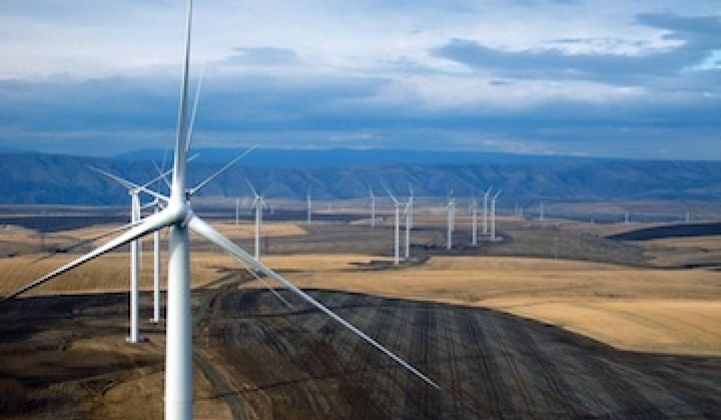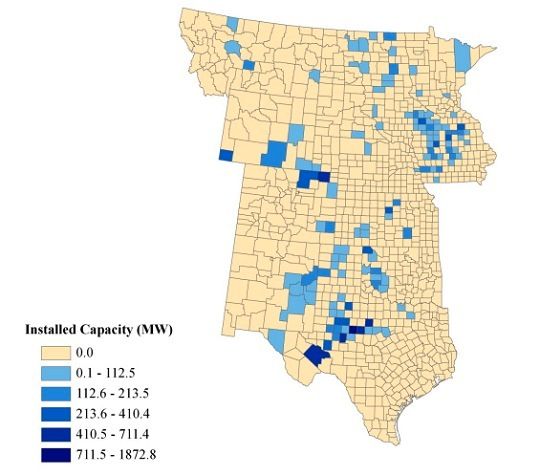The authors didn’t intend it as an an analysis of the wind power production tax credit, but it’s hard not to see the results as one more argument to keep the PTC alive: Wind power reaches right down to the local level as an economic engine, boosting incomes and jobs in the counties where turbines go up, according to a new study.
“Taking into account factors influencing wind turbine location, we find an aggregate increase in county-level personal income and employment of approximately $11,000 and 0.5 jobs per megawatt of wind power capacity installed over the sample period of 2000 to 2008,” write researchers from the U.S. Department of Agriculture’s Eoconomic Research Service, Lawrence Berkeley National Laboratory and the National Renewable Energy Laboratory.
The authors said their study was unique in that it moved beyond project-level case studies as well as modeled input-output estimates and instead evaluated actual county-level impacts from the wind power development in 12 contiguous states in the central United States.
Nevertheless, the authors said, the results were in line with those seen using other analytical methods.
“These estimates appear broadly consistent with modeled input–output results, and translate to a median increase in total county personal income and employment of 0.2% and 0.4% for counties with installed wind power over the same period,” the authors write.
12-state study area (image via Lawrence Berkeley National Laboratory)
The overriding argument for wind power, of course, is that it can be a significant source of clean power, helping move the world off climate-damaging fossil fuels. But the economic piece is important as well in a time of steady but frustratingly modest improvements in the U.S. jobs picture.
That’s why the National Resources Defense Council, which supports wind for environmental reasons, recently backed research into the economic impact of wind power development.
That report asserted that a typical new 250 megawatt wind farm would create 1,079 jobs. But a second part of that report [PDF] — looking at wind’s local impacts in particular places – was even more relevant to the new county-level impact study.
The list of economic benefits cited for Sherman County, Ore., for example, gives some insight into what might be driving the growth figures arrived at in the county study:
- $17.5 million in property taxes and fees
- Annual payments of up to $7,800 per turbine to landowners
- Per capita income increases, from $18,354 in 2001 to $52,530 in 2011, to become the highest in the state
- $1.8 million grant to school district in 2011 to fund new equipment, classes, and teachers
- Five-hundred onsite construction jobs
- Eighty long-term jobs in operation
- Increased economic activity helps keep small businesses alive
- Annual check of $590 to all residents
The new study, “Ex post analysis of economic impacts from wind power development in U.S. counties,” appears in the November 2012 issue of Energy Economics, and unfortunately is behind a $31.50 pay wall. But a draft-version PDF of the article is available, as is a two-page fact sheet prepared by the Department of Energy, which financed the work, and a briefing summary prepared by the authors.
***
Editor's note: This article is reposted in its original form from EarthTechling. Author credit goes to Pete Danko.




